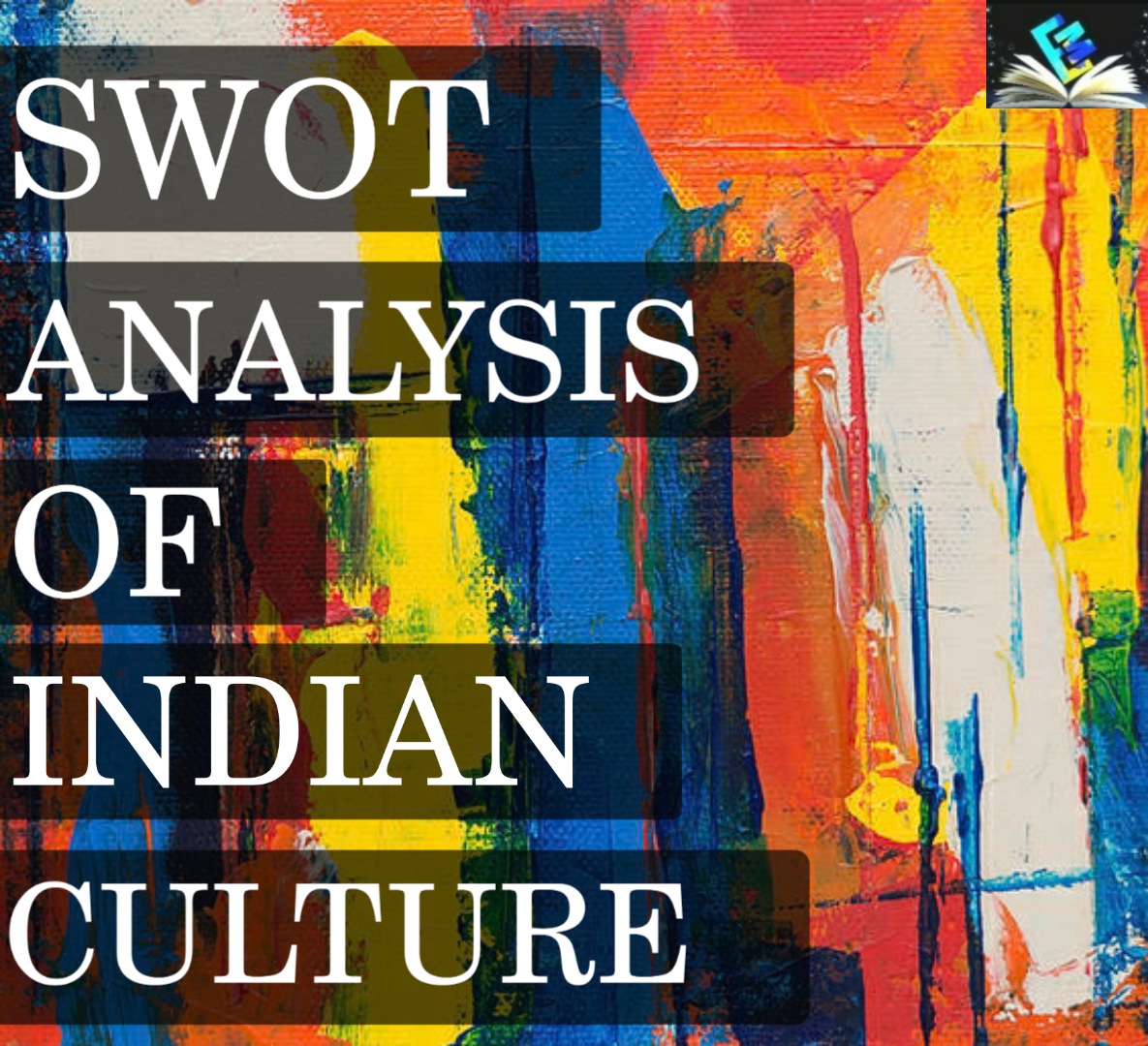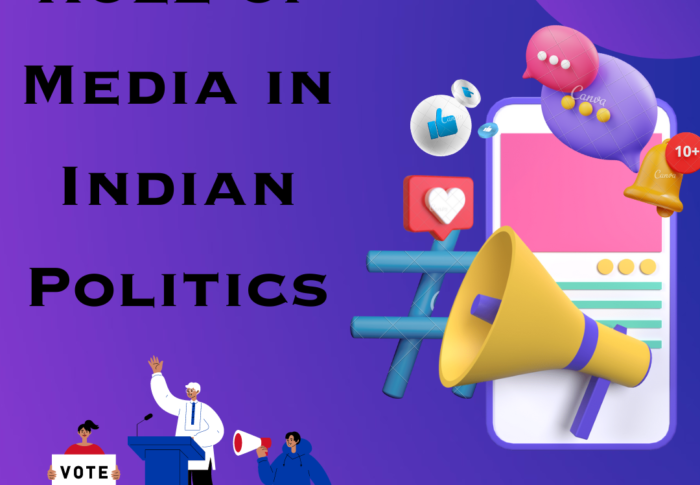
SWOT Analysis of Indian Culture
AUTHOR : SANJHALI BAJAJ
ABSTRACT
Just as the SWOT (Strengths, Weaknesses, Opportunities, and Threats) Analysis facilitates a business organization to pave a smoother path towards progression similarly it will help us through this assignment to understand the customs, traditions, values, food, and yoga of Indian culture.
INTRODUCTION
Just as the SWOT (Strengths, Weaknesses, Opportunities, and Threats) Analysis facilitates a business organization to pave a smoother path towards progression similarly it will help us through this assignment to understand the customs, traditions, values, food, and yoga of Indian culture.
In the words of Mark Twain, “India is the cradle of the human race, the birthplace of human speech, the mother of history, the grandmother of legend, and the great grandmother of tradition. Our most valuable and most artistic materials in the history of man are treasured up in India only!”
Modern humans from Africa arrived on the Indian landmass and commenced living within the western margins of the Indus River and eventually evolving into the Indus Valley Civilization. Similarly, the Gupta and Mauryan empires started living within the Ganges river basin, and thereby these two rivers led to the emergence of Bharat, The Republic of India.
Culture does not merely reflect monuments or artistic creation; it also provides for the traditions we have incorporated by our ancestors. The philosophers and scholars have endeavored to put forth the diversity of India which gave us different aspects of it. Indian culture is just like a lotus which has several aromatic petals spreading unique fragrance in the whole of humanity. The language, dance, religions, music, various customs, food, rituals, artifacts, monuments, costumes, literature, and architecture form the rich culture of India.
The amalgamation of several customs, rituals, and traditions of the Indian culture reflects the rich heritage of our country, which is one of the oldest civilizations in the world and referred to as “Sa Prathama Sanskrati Vishvavara” — the first and the supreme culture in the world, according to the All World Gayatri Pariwar (AWGP) organization. It has always been a multidimensional, complex, and inclusive civilization. Its complexity is well-defined by its diversity in religion, culture, and languages.
STRENGTHS
Stretching from the Himalayas in the north to the Indian Ocean in the south, and from Rann of Kutch in the west to the Siang river in the east, India is an incredible land of diversity. This diversity ends up bestowing India a vast variety of customs and traditions. The custom that comes to our mind after hearing the word Indian traditions is the greeting ‘Namaste’ which comes from the word Namaha which implies ‘not mine’ to signify the reduction of one’s ego within the presence of another. Thus, Namaste is just not only a custom but also has several values and beliefs attached to it.
These values teach us to treat our guests as gods according to the saying, ‘Atithi Devo bhava’ which is an ancient Indian tradition of Indian hospitality. The tourists feel this wherever they go in India and thereby fall in love with this country.
There are several other customs such as ear piercing, fasting, eating with hands, wearing jewelry, drinking water from copper utensils, and so on. All these customs have theories and scientifically proven reasons behind it. Sitting on the floor and eating with hands is another Indian custom that helps people to improve their digestion and increase the flavor of food.
How can we ignore Indian food when we are talking about its culture? The subtle flavors of the distinctive Indian spices offer Indian food a profound recognition within the world. The diversity in its climate, soil type, culture, occupations, ethnic groups, and the availability of different aromatic spices in various parts end up providing a wide variety of cuisines.
The essence of Indian food lies in its sugary and spicy bases. The flavors of clove, cardamom, turmeric, chilly, pepper, ginger, and garlic enhance the taste and make the experience rejuvenating. Indian food not only differs from the rest of the world because of its taste but also for its cooking methods. For instance, if we take into consideration the process of sauteing, this method is used by almost all cultures but the difference is that Indians sauté on a low flame with time to time splashing of water to prevent the spices from burning whereas Chinese sauté on medium flame with continuous stir without additional water.
The uniqueness of India is that you can go to any city and have their special dishes to learn their lifestyle as their food depicts their styles of living. The names of the dishes might be different but the flavors and spices are as united as our culture.
It reflects a flawless fusion of several cultures and ages. The way our culture is derived from civilizations, Indian food is also influenced by the same. The food in India is classified into three major categories -Sattva, Rajas, and Tamas. Sattva stands for balance, Rajas stands for passion, and Tamas stands for indulgence. These three Gunas introduce us to the yogic concept of food. The food we eat has an enormous influence on us physically, mentally, emotionally, and spiritually.
Yoga introduces the person to the path of spiritual enlightenment. It gives us insights into the Indian yogic culture and it has a different charisma as it is a practice all around the world but has its root in India. It helps us to achieve a focused mental state, peace, and calmness throughout the day.
Thus, we may say that India is a land of vibrant colors, incredible landscapes, and rich history. It provides a varied feast for all the senses. It will lead you to explore an incredible journey of the rich cultural heritage of India.
WEAKNESSES
Traditions and customs were evolved when science and technology were not precisely established. They were based on values and faith in the culture. As science started nourishing a conflict between tradition and science was commenced as traditions are based on values and science on logic. This blind faith in our values led to ahimsa(violence), casteism, and several socio-cultural problems. As Swami Vivekananda said “ignorance is death” and this ignorance became the biggest cultural weakness of India.
For instance, the Bani festival of Andhra Pradesh where devotees gather to hit each other on their heads at the midnight and it goes on till the bleak of dawn, the popular tradition of feeding venomous snakes with milk and worshipping them which is popularly known as Naag Panchmi, the tradition of Madey Snana of Karnataka where people from lower caste roll over food leftovers of Brahmins thinking it will cure all their ailments, and so on. These traditions are not only perilous for our life but also seize us in these narrow values and beliefs.
Indians pray before eating their food as a tradition to thank God and if we take into consideration the staple Indian diet it usually consists of roti, rice, dal, beans, legumes, chutney, pickle and if you are a non-vegetarian then meat, chicken, or fish can also be found on the plates. Don’t you think it constitutes a balanced diet with an ample amount of fiber, fat, carbohydrates, proteins, and vitamins and minerals; it does. But the problem starts with the habit of having fried Indian snacks and munching on unhealthy snacks between the meals. According to the survey conducted by the George Institute for Global Health India has been ranked lowest in terms of the healthiness of packaged food and drinks.
Due to these habits, obesity, and diabetes continue to be a significant public health problem for our country. We are seeing people report problems such as weight gain, heart diseases, high cholesterol levels over the years. According to the Lancet Journal, India is in the top five in terms of obesity. PCOS, PCOD, and infertility are on the rise too. And thereby India is considered to be the Diabetes capital of the world according to the International Journal of Diabetes of Developing countries as over 60 million are diabetics in the country. As said in the strengths all these ailments can be cured by yoga up to some extent.
Sadhguru, the famous mystic of India said “Yoga is Hindu just the way gravity is Christian. Just because the law of gravity was propounded by Isaac Newton, who lived in a Christian culture, does it make gravity Christian? Yoga is a technology. Anybody who is willing to make use of it can make use of it.” Connecting religion to every ritual is not what Indian culture communicates. As Indian culture was evolved from the banks of the river Sindhu our culture got labelled as Hindu. Hindi is not an ‘ism’ – it is not a religion. Rather it is a geographical and cultural identity.
Therefore, weaknesses of Indian culture lie in its beliefs which they don’t want to question as they believe that questioning one’s culture is considered unethical.
OPPORTUNITIES
Indian culture is flexible and versatile and Indians practice it according to their natural values and methods of praying. It is very significant to take into consideration the negative facets of Indian culture and ponder our thoughts over it to evolve into a better place.
“Culture is live and its nature is like a turtle, in time of trouble it contracts all its parts- leg, hand, neck & head, becomes like a stone and for others seems like dead, but the moments it feels safe, it takes out all its parts ant starts moving forward”.
The people of India have their own values and beliefs for their traditions and customs that they pursue. These traditions represent Indian culture critically. It tells that how we define our part by being a part of history, what we are today and what we will become which means we need to adapt this from our ancestors, practice it and then pass it on to our next generations. The promotion of our traditions, customs, and values is what will help us to make this oldest civilization to survive.
We should invite and encourage scholars to learn more about the Indian culture and through their publications intrigue the people to know more about it. Indian colleges and institutions should research, adapt, and promote the beauty of this culture as the youth are the future of tomorrow.
Yoga which has its roots in India and promotes Indian culture is now being practiced throughout the world. With the idea of our Honorable Prime Minister Shri Narendra Modi which he put forth during his speech at the United Nations General Assembly, we celebrated International Yoga Day for the very first time on 21 June 2015. The enthusiasm with which it is being celebrated all over the world on 21st June gives India the ardent gratitude it needed.
Now taking into consideration the Indian food which excites us all and takes us into the aromatic world of spices. We have approximately 42 Mega Food Parks in India which promote the foreign countries to invest in our food processing units which will not only strengthen our economic ties with other countries but also enhance the exposure of Indian food. Food fests like ‘Eat in India | Make in India’ to promote Indian food and its cooking methods is an upright step to expand the reach of Indian food. Introducing more TV shows and documentaries related to Indian food to make everyone aware of the prepossessing dishes of India ranging from the Biryani of Hyderabad to the Vada Pav of Mumbai.
Thereby, these opportunities should be grabbed as because opportunities don’t always knock on the door. Also, we should try creating more opportunities to promote the prepossessing Indian culture rather than waiting for the right time.
THREATS
The diversity which makes this Indian culture unique becomes a threat to it too. People’s blind trust in their traditions and customs create a difference among them. These differences are then used by the outsiders to criticize and humiliate our values and influence our youth to adapt their culture. Our civilization being the oldest one would not be able to survive if we do not change with changing times. The modernization of these traditions by society seems to go against their spiritual values. We definitely need to modernize our culture by keeping in mind that it should not affect our deep-rooted values and sentiments of our ancestors.
Adapting westernization is upright but their culture overpowering ours is not virtuous. Ranging from clothes to our traditional values is influencing the youth on a great scale which is a sign of danger for Indian culture.
Yoga which depicts our culture uprightly is now getting replaced by gyms that have loud music and gigantic machines. We need to make people understand that yoga benefits our body, mind our soul. It is not just about physical exercise but it infuses our spirits with positivity. It improves concentration, reduces stress, and teaches us self-acceptance.
As mentioned earlier about the three Gunas of the yogic food which are Sattva, Rajas, and Tamas; it helps us to control our behavior if we adapt these Gunas. But how many of us really know about it, we are getting influenced by the Chinese junk food leaving behind our Indian cuisines. We can create fusions of Indian and western food rather than just incorporating the western food entirely into our culture.
The way we fought for our freedom we need to fight for our culture too as without it we will merely end up being just a society that can be oppressed by anyone. Our desires might make us lose our identity in the world therefore we must control these desires and promote our Indian culture.
Thereby, it’s time to convert our threats into our opportunities and provide India with the recognition it deserves.
CONCLUSION
With the help of this SWOT Analysis, we have endeavored to study the meaning, significance, importance, and implications of our Indian culture. The interrelation between traditions, customs, values, food, and yoga complementing their respective SWOT was the purpose of this research article.
The strengths need to be sustained and the weaknesses should be rectified with great responsibility and enthusiasm. We should grab the opportunities and the threats are needed to look upon for betterment.
As Indians, we need to uphold our cultural values which we adapted from our ancestors and further pass it on to our future generations. On us lies the responsibility of the oldest civilization and thereby we need to safeguard it.
India is land to 28 states and 8 union territories and recognizes 23 official languages which are not perceived anywhere else in the world. Our cultural diversity makes us united and stronger than the rest of the world.
I would like to conclude with a quote defining India:
“She (India) has left indelible imprints on one-fourth of the human race in the course of a long succession of centuries. She has the right to reclaim … her place amongst the great nations summarizing and symbolizing the spirit of humanity. From Persia to the Chinese sea, from the icy regions of Siberia to the Islands of Java and Borneo, India has propagated her beliefs, her tales, and her civilization!”
-Sylvia Levi
REFERENCES
- https://www.rediff.com/getahead/slide-show/slide-show-1-specials-9-core-values-indias-youth-must-follow/20110617.htm#8
- https://yogaindailylife.org.au/blog/2013/06/20/food-and-the-three-gunas
- https://www.livescience.com/28634-indian-culture.html
- https://yehaindia.com/yoga-indian-culture/
- https://www.healthandyoga.com/retreat/yoga_within_indian_culture.aspx
- https://www.scoopwhoop.com/inothernews/unbelieveable-celebrations-of-india/
- https://timesofindia.indiatimes.com/india/No-1-in-underweight-population-India-among-top-5-in-obesity/articleshow/51656193.cms
- https://karnataka.pscnotes.com/main-notes/general-studies/kpsc-mains-science-technology/preservation-promotion-of-culture-and-indigenous-knowledge-use-of-regional-language-in-ict/
- https://www.doyou.com/15-reasons-yoga-is-better-than-the-gym/
Sanjhali Bajaj is a Student of 1ST YEAR BALLB, bajajsanjhali@gmail.com
For more information Visit Our Site
To submit your work : Call for Blogs







Comments
Very informative